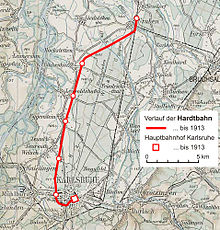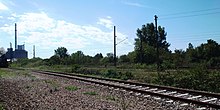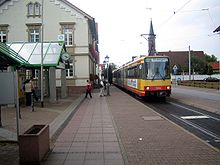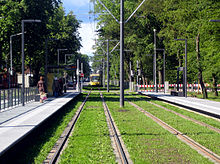Hardtbahn
| Graben-Neudorf-Karlsruhe | |||||||||||||||||||||||||||||||||||||||||||||||||||||||||||||||||||||||||||||||||||||||||||||||||||||||||||||||||||||||||||||||||||||||||||||||||||||||||||||||||||||||||||||||||||||||||||||||||||||||||||||||||||||||||||||||||||||||||||||||||||||||||||||||||||||||||||||||||
|---|---|---|---|---|---|---|---|---|---|---|---|---|---|---|---|---|---|---|---|---|---|---|---|---|---|---|---|---|---|---|---|---|---|---|---|---|---|---|---|---|---|---|---|---|---|---|---|---|---|---|---|---|---|---|---|---|---|---|---|---|---|---|---|---|---|---|---|---|---|---|---|---|---|---|---|---|---|---|---|---|---|---|---|---|---|---|---|---|---|---|---|---|---|---|---|---|---|---|---|---|---|---|---|---|---|---|---|---|---|---|---|---|---|---|---|---|---|---|---|---|---|---|---|---|---|---|---|---|---|---|---|---|---|---|---|---|---|---|---|---|---|---|---|---|---|---|---|---|---|---|---|---|---|---|---|---|---|---|---|---|---|---|---|---|---|---|---|---|---|---|---|---|---|---|---|---|---|---|---|---|---|---|---|---|---|---|---|---|---|---|---|---|---|---|---|---|---|---|---|---|---|---|---|---|---|---|---|---|---|---|---|---|---|---|---|---|---|---|---|---|---|---|---|---|---|---|---|---|---|---|---|---|---|---|---|---|---|---|---|---|---|---|---|---|---|---|---|---|---|---|---|---|---|---|---|---|---|---|---|---|---|---|---|---|---|---|---|---|---|---|---|---|---|
|
Historical development of the Hardtbahn
| |||||||||||||||||||||||||||||||||||||||||||||||||||||||||||||||||||||||||||||||||||||||||||||||||||||||||||||||||||||||||||||||||||||||||||||||||||||||||||||||||||||||||||||||||||||||||||||||||||||||||||||||||||||||||||||||||||||||||||||||||||||||||||||||||||||||||||||||||
| Route number (DB) : | 4025 (Kar-Knielingen – Ka-Neureut) 9429 (Nordweststadt – Hochstetten) |
||||||||||||||||||||||||||||||||||||||||||||||||||||||||||||||||||||||||||||||||||||||||||||||||||||||||||||||||||||||||||||||||||||||||||||||||||||||||||||||||||||||||||||||||||||||||||||||||||||||||||||||||||||||||||||||||||||||||||||||||||||||||||||||||||||||||||||||||
| Course book section (DB) : | 710.1 | ||||||||||||||||||||||||||||||||||||||||||||||||||||||||||||||||||||||||||||||||||||||||||||||||||||||||||||||||||||||||||||||||||||||||||||||||||||||||||||||||||||||||||||||||||||||||||||||||||||||||||||||||||||||||||||||||||||||||||||||||||||||||||||||||||||||||||||||||
| Route length: | 22.5 km | ||||||||||||||||||||||||||||||||||||||||||||||||||||||||||||||||||||||||||||||||||||||||||||||||||||||||||||||||||||||||||||||||||||||||||||||||||||||||||||||||||||||||||||||||||||||||||||||||||||||||||||||||||||||||||||||||||||||||||||||||||||||||||||||||||||||||||||||||
| Gauge : | 1435 mm ( standard gauge ) | ||||||||||||||||||||||||||||||||||||||||||||||||||||||||||||||||||||||||||||||||||||||||||||||||||||||||||||||||||||||||||||||||||||||||||||||||||||||||||||||||||||||||||||||||||||||||||||||||||||||||||||||||||||||||||||||||||||||||||||||||||||||||||||||||||||||||||||||||
| Route class : | D4 | ||||||||||||||||||||||||||||||||||||||||||||||||||||||||||||||||||||||||||||||||||||||||||||||||||||||||||||||||||||||||||||||||||||||||||||||||||||||||||||||||||||||||||||||||||||||||||||||||||||||||||||||||||||||||||||||||||||||||||||||||||||||||||||||||||||||||||||||||
| Power system : | Nordweststadt – Hochstetten, KIT campus: 750 volts = | ||||||||||||||||||||||||||||||||||||||||||||||||||||||||||||||||||||||||||||||||||||||||||||||||||||||||||||||||||||||||||||||||||||||||||||||||||||||||||||||||||||||||||||||||||||||||||||||||||||||||||||||||||||||||||||||||||||||||||||||||||||||||||||||||||||||||||||||||
| Maximum slope : | 29.986 ‰ | ||||||||||||||||||||||||||||||||||||||||||||||||||||||||||||||||||||||||||||||||||||||||||||||||||||||||||||||||||||||||||||||||||||||||||||||||||||||||||||||||||||||||||||||||||||||||||||||||||||||||||||||||||||||||||||||||||||||||||||||||||||||||||||||||||||||||||||||||
| Minimum radius : | Reversible loops: 23 m | ||||||||||||||||||||||||||||||||||||||||||||||||||||||||||||||||||||||||||||||||||||||||||||||||||||||||||||||||||||||||||||||||||||||||||||||||||||||||||||||||||||||||||||||||||||||||||||||||||||||||||||||||||||||||||||||||||||||||||||||||||||||||||||||||||||||||||||||||
| Top speed: | 80 km / h ( LNT ) 50 km / h |
||||||||||||||||||||||||||||||||||||||||||||||||||||||||||||||||||||||||||||||||||||||||||||||||||||||||||||||||||||||||||||||||||||||||||||||||||||||||||||||||||||||||||||||||||||||||||||||||||||||||||||||||||||||||||||||||||||||||||||||||||||||||||||||||||||||||||||||||
| Train control : |
PZB90 (Knielingen-Neureut) AVG-IMU |
||||||||||||||||||||||||||||||||||||||||||||||||||||||||||||||||||||||||||||||||||||||||||||||||||||||||||||||||||||||||||||||||||||||||||||||||||||||||||||||||||||||||||||||||||||||||||||||||||||||||||||||||||||||||||||||||||||||||||||||||||||||||||||||||||||||||||||||||
| Dual track : | from Nordweststadt to km 1.210 | ||||||||||||||||||||||||||||||||||||||||||||||||||||||||||||||||||||||||||||||||||||||||||||||||||||||||||||||||||||||||||||||||||||||||||||||||||||||||||||||||||||||||||||||||||||||||||||||||||||||||||||||||||||||||||||||||||||||||||||||||||||||||||||||||||||||||||||||||
|
|||||||||||||||||||||||||||||||||||||||||||||||||||||||||||||||||||||||||||||||||||||||||||||||||||||||||||||||||||||||||||||||||||||||||||||||||||||||||||||||||||||||||||||||||||||||||||||||||||||||||||||||||||||||||||||||||||||||||||||||||||||||||||||||||||||||||||||||||
The Hardtbahn is a railway line in the Karlsruhe region , which originally connected Karlsruhe and Graben-Neudorf and was built in 1870 as part of the Rheinbahn Mannheim – Karlsruhe. After a shorter connection was created in the course of the strategic railway line Graben-Neudorf– Blankenloch –Karlsruhe, which was opened in 1895, the Karlsruhe – Eggenstein –Graben-Neudorf section, known from then on as the “Hardtbahn”, was sidelined in terms of traffic and thus relegated to a branch line . Since the demand for passenger transport had fallen significantly after the Second World War , this was discontinued in 1967 and the Leopoldshafen – Graben-Neudorf section was dismantled in the following period.
In 1979, on the section in the Karlsruhe district of Neureut , a light rail operation was opened under the direction of the Albtal-Verkehrs-Gesellschaft (AVG), which opened in 1986 to Leopoldshafen and in 1989 to Hochstetten . Local routes were built in Leopoldshafen, Linkenheim and Hochstetten. The term “Hardtbahn”, which has been describing the Karlsruhe – Hochstetten light rail line since then, comes from the Hardtwald , on the western edge of which it and its historical predecessor run.
Route
Hardtbahn (since 1979)
After the low-lying stop “Haus Bethlehem”, the operating mode of the route changes from the tram construction and operating regulations (BOStrab) to the railway construction and operating regulations (EBO). After the route has returned to street level, it crosses the unfinished street route for the Karlsruhe north bypass using a “ soda bridge ” . Then, after an S-curve, it merges into the old Hardtbahn route and follows it to Eggenstein, which it leaves again shortly before crossing the Pfinz relief canal in order to open up the center of Leopoldshafen. Between Leopoldshafen and Linkenheim it comes up to the old route again for a few meters, but then drives through the center of Linkenheim to end in Hochstetten at the local new development area "Langer Berg".
Historic Hardtbahn (until 1967/1979)
Coming from Karlsruhe main station , the Hardtbahn trains initially used the Winden – Karlsruhe line from 1913 to Mühlburg . In the Mühlburg train station, the Hardtbahn branched off to the right. Then it leads in a straight line through the industrial area of Knielingen and then crosses the federal highway 36 ; shortly before Neureut, the new route joins the old route and runs with it to Eggenstein. However, a new bridge was built over the B36 . The "old Hardtbahn" is dismantled from Leopoldshafen, but the track structure on the outskirts of Leopoldshafen is still clearly visible. In Linkenheim, the route from Bahnhofstrasse is now overbuilt. Then the route passes the far eastern edge of Hochstetten to cross the Hardtwald, where the route can be identified again in order to reach the Graben-Neudorf station a few kilometers further .
Until 1913, the Hardtbahn branched off from the Maxaubahn at the Mühlburger Tor station and from there followed Erzbergerstraße in a northerly direction through Karlsruhe's northern part of the city , which at that time was in the middle of the Hardtwald. It then ran for a few kilometers through the then undeveloped area, where the Neureut districts of Heide- and Kirchfeldsiedlung, which only emerged after the Second World War, are located, in order to reach the route north of Neureut, which was also used after 1913.
Relics of the old Hardt Railway
From the former train station in Neureut, which was located between today's “Bärenweg” and “Adolf-Ehrmann-Bad” stops , you can still see the station building , which is now used privately. Remnants of the platform are also still there.
The station building of the Eggenstein train station has also been sold. Between the Eggenstein train station and the “Eggenstein Süd” stop there are two electrified sidings , at the end of which there was a wooden goods shed until the early 1980s . In 1986, the AVG built an outdoor warehouse in its place. In Leopoldshafen, the track ballast of the previous route is still there, and tracks can still be seen at an earlier level crossing on the northern outskirts.
In Linkenheim, where the route is largely built over, a memorial stone reminds of the former train station, and the “Bahnhofstrasse” and another street called “An der Bahn” keep the memory of the route alive. Between Graben-Neudorf and Hochstetten, the former railway line gave way to a dirt road. In this area there are still several small bridges that were once used by the railway line. In addition, the platform from which the Hardtbahn trains departed from 1895 onwards is still in place at the Graben-Neudorf station. Today (2015) individual regional trains run from this platform to Karlsruhe via Blankenloch.
Most of the route within the Karlsruhe city area can still be seen today. The Karlsruher tram line 3 (" Nordstadtbahn ") has been running through Erzbergerstraße since May 2006 on the former Hardtbahn route through Karlsruhe's Nordstadt to Neureut-Heide . Between Neureut-Heide and Neureut-Kirchfeld there is also the “Alte Bahnlinie” street, which is reminiscent of the former route.
The old track between the railway line Karlsruhe - Landau and Eggenstein that through the industrial area of Knielingen leads, is still available, but practically no longer used. The track was only used once in February 2011 for the removal of radioactive waste from the former nuclear research center, as well as for special steam train journeys for the Open Monument Day in September 2018.
history
Opening and first years (1870–1890)
The Badische Hauptbahn was built from 1840 onwards from Mannheim via Heidelberg to Karlsruhe and from there on to Basel until 1855 and later to Constance . The detour via Heidelberg, however, was a thorn in the side of the city of Mannheim in particular, as its natural catchment area, which was located directly on the Rhine around the cities of Schwetzingen and Hockenheim , had remained on the left.
Then there was a fierce debate over the route of the southern part: the plans, the web over Linkenheim , Eggenstein and Neureut to the station Mühlburger Tor Karlsruhe to lead, where it enters the the central station in Karlsruhe leading maxau railway should open out, gave the Baden Grand Duke Friedrich I . to have run against efforts, the route over the east of the city, take precedence. It was accepted that no through traffic in north-south direction was possible on the route , as this should continue to run over the Heidelberg-Karlsruhe route .
Therefore, on August 4, 1870, the Mannheim - Schwetzingen - Graben-Neudorf - Eggenstein - Karlsruhe railway was opened by the Hardt , which was initially referred to as the " Rheinbahn ".
Further development and closure (1890–1967)
Since it was firmly expected that a military conflict with France would soon come again , there were efforts to build strategic railroad lines . Against this background, the German General Staff in particular called for a railway line on the Graben-Neudorf - Blankenloch - Karlsruhe - Durmersheim - Rastatt - Roeschwoog - Haguenau route , which was opened in 1895. Since this route via Blankenloch was the shorter and more direct route, the trains from Mannheim via Schwetzingen to Karlsruhe ran from then on via this strategic railway line. On the Karlsruhe - Eggenstein - Graben-Neudorf section, which has since been known as the "Hardtbahn", there were no longer any through trains to Mannheim, instead they ended in Graben-Neudorf.
In 1900 it was decided to relocate Karlsruhe Central Station, which was then located in the city center at Ettlinger Tor, to what was then the southern outskirts, which was carried out in 1913. Thus, the route of the Hardtbahn changed within the city of Karlsruhe and the then independent Neureut. At that time an 8.0 kilometer long new line was built from Eggenstein station to Karlsruhe-Mühlburg station on the Winden – Karlsruhe line , on which the Hardtbahn trains also reached the new Karlsruhe main station. In this context, Neureut also received a new station, which was a little west of the original route.
Since the ridership of Hardt Railway, which in the course book last under the line number 302e was listed, declined continuously since 1950, was the May 28, 1967 on passenger set on the track. Between Graben-Neudorf and the branch to the middle of the Hardt Forest lying Nuclear Research Center Karlsruhe (now Karlsruhe Institute of Technology North Campus, Campus North ) located between Leopoldshafen is and left home, she was subsequently dismantled. Only the freight traffic to the US barracks in Neureut and to the research center saved the section between KA-Mühlburg and the nuclear research center from being closed. Between 1952 and 1974 there was also a siding to the US supply center at the old airfield on the route used until 1913.
Start of light rail operations (1967–1979)
After Neureut was incorporated into Karlsruhe in 1975, a tram connection was then contractually agreed. Especially for this purpose, a so-called free holding route was established east of the Hardtbahn in a new development area in Neureuter.
However, since the Hardtbahn opened up Neureut much more centrally than the Freihaltetrasse, the idea of using it for tram operation came up. For this purpose, line A operated by AVG, which has ended in the north-west of Karlsruhe since 1978 from the Albtalbahn or the Busenbach – Ittersbach line , was to be extended to Neureut.
Lengthy and difficult negotiations between AVG and DB followed. The free route originally intended for the tram connection has not yet been built on and is therefore still clearly visible. On December 23, 1977, a contract was finally agreed between the German Federal Railroad (DB) and AVG, which was supposed to allow AVG to use the DB freight line in Neureut. The AVG railcars were found to be suitable for the route during an investigation. Then the construction work began.
On October 5, 1979, the rebuilt section to Neureut was opened. From the “Welschneureuter Straße” stop to the provisional terminus “Neureut Kirchfeld”, line A ran on the tracks of the Hardtbahn. The trains initially ran to Neureut every 20 minutes. This extension of an inner-city tram route on a former route of the German Federal Railroad was one of the development steps of the “ Karlsruhe Model ”.
Extension to Leopoldshafen and Hochstetten (1979–1989)
On July 2, 1982, a contract was signed between the city of Karlsruhe and the municipalities of Eggenstein-Leopoldshafen and Linkenheim-Hochstetten , which provided for the extension of the Hardtbahn to Hochstetten.
In 1982, the city of Karlsruhe took over the route from the DB from the time the tram line was threaded. The freight traffic was still served by the DB. On January 1, 1987, the entire route from the Nordweststadt tram loop to Neureut became the property of AVG.
In 1983, light rail cars were purchased, which in August of the same year replaced the AVG articulated railcars previously used on Line A. The new cars had a much larger capacity.
In November 1985 the conversion of the Hardtbahn between Neureut and Leopoldshafen began. The opening of this section took place on December 13, 1986. To Eggenstein it follows the route of the old Hardtbahn, in Leopoldshafen it leads through the town center. In 1987 and 1988, as part of a so-called "station program", several platforms on the Hardtbahn were raised to 38 centimeters in order to enable passengers to enter the vehicles more easily and thus to accelerate the change of passengers.
On June 3, 1989, the Hardtbahn was finally extended to Hochstetten. The original plans had provided for the old route to be used again from Leopoldshafen in order to subsequently develop both Linkenheim and Hochstetten better with a new route. Ultimately, the route was built completely through the center of Linkenheim on the former federal highway 36 , which had been moved to a bypass road, which continues to cause conflicts with private traffic due to the limited space in the town center.
Further expansion (1989–1997)
Since December 8, 1989, a pair of trains has also been traveling to the Karlsruhe Research Center twice a day . For this purpose, the track within the research center had to be extended in order to be able to build a train station there. A little later (early 1990) it was agreed that the freight trains to the research center would in future run through the center of Leopoldshafen, so that the old Hardt railway line between Eggenstein and the branch to the research center was superfluous in 1990 and was therefore dismantled in the following period. A steam locomotive was last parked for a long time on the old route of the Hardtbahn in Leopoldshafen. The line was not officially closed until May 27, 1997.
In 1990 the line in the area of the Neureut station was expanded to two tracks, followed in 1992 in Leopoldshafen by the section between the “Frankfurter Strasse” stop and the Wendeschleife , which operationally forms the Leopoldshafen Nord station. At the beginning of 1993, Eggenstein station was extended to the north with the double-track expansion of the section between the “Eggenstein station” and “Eggenstein Schweriner Strasse (formerly Brahmsstrasse)” stops. The entry points of the station are oil pressure-delayed fallback points.
In 1994, in connection with the establishment of the Karlsruhe Transport Association (KVV), Line A was renamed "S1" (for the Hochstetten - Bad Herrenalb trains ) and "S11" (for the Hochstetten - Ittersbach trains ). At the turn of the year 1995/1996 the new "Eggenstein Süd" stop went into operation in the south of Eggenstein, and the second track, which previously only reached to the "Eggenstein Bahnhof" stop, was extended to the new stop, so that the Hardtbahn in Eggenstein Since then it has been continuously accessible on two tracks.
In 1997, the section between the “Neureut Kirchfeld” stop and the bridge over federal highway 36 was expanded to double-track; since then, the line between Neureut and Eggenstein has only been single-tracked over a length of around 500 meters. The stations, which were lengthened by the new double-track sections, enabled a more stable timetable on the entire route and so-called “flying train crossings ”, at which the trains encountering each other do not have to stop.
Further development (since 1998)
As a further upgrading measure, the AVG replaced the remaining track remnants from DB times, some of which were still around 100 years old, with new tracks in Neureut and between Neureut and Eggenstein. In order to make operations easier, AVG subsequently bought the entire route from DB, including the Neureut – Mühlburg freight link, and has since been responsible for handling the remaining freight traffic on the Hardtbahn.
Two fatal accidents have recently occurred on the Hardtbahn: at the end of 2003 a train caught a schoolgirl at the “Leopoldshafen Viermorgen” stop, and just one and a half years later a similar incident with a fatal outcome took place in Linkenheim at the “Schulzentrum” stop. Memorials to the respective victims were erected at both stops. As a consequence of these deaths, more information boards were put up on the platforms to indicate the risk of accidents.
The old route within Karlsruhe, which was used between 1870 and 1913, has been used by the Verkehrsbetriebe Karlsruhe (VBK) for the tram line 3 to Karlsruhe's northern part of the city since May 2006 .
Possible extension via Dettenheim to Philippsburg
Efforts to extend the Hardtbahn via the two districts of Dettenheim Liedolsheim and Rußheim to Philippsburg have not yet been implemented, and it is unclear whether this extension will be implemented at all. For a long time, according to the long-standing AVG chairman Dieter Ludwig , there were only “rough drawings with a felt pen”.
A few years ago there were some preliminary investigations that resulted in two variants as solutions: Both should leave the existing route shortly before the “Hochstetten Altenheim” stop and continue straight on for about five hundred meters. The existing stop would have to be relocated accordingly.
While one variant should run through the center of Hochstetten and Liedolsheim, the other should only pass through the respective outskirts. Both are to receive one more stopping point in Hochstetten and a total of two in Liedolsheim. From Rußheim both variants run together until they end at the Philippsburg train station of the Bruhrainbahn .
The first variant has the disadvantage that the travel times compared to today's bus line 192 (Hochstetten – Dettenheim – Philippsburg) would be only slightly shorter, so the variant on the outskirts has a lower development effect. Since the center of Hochstetten has meanwhile been redeveloped, the implementation of the outskirts variant can still be expected today.
business
Timetable
The "New Hardtbahn" is now integrated into the Karlsruhe light rail network as S1 or S11 . Both lines are led from Hochstetten into Karlsruhe city center and connected with the " Albtalbahn " in the direction of Ettlingen .
Between Karlsruhe and Neureut there is a ten-minute cycle until around 9 p.m. Up to this time there is at least a 20-minute cycle to Hochstetten, and there are a few trains that end in Leopoldshafen. DC light rail vehicles from the Albtal-Verkehrs-Gesellschaft (AVG), whose design is based on the B light rail vehicle , are used. Two-system vehicles , on the other hand, were only in use on the Hardtbahn in 1991 and 1992.
All platforms - with the exception of the “Linkenheim Rathaus” stop - are 34 centimeters high. The stops “Eggenstein Süd” and “Leopoldshafen Viermorgen” as well as all stops in the BOStrab area are demand stops .
Operation to the KIT Campus North
In the morning, a total of two trains go to the KIT Campus North. At the “Frankfurter Straße” stop in Leopoldshafen, the wing train principle is used: The front car drives to Hochstetten, the rear one to Campus North. Only the employees there are allowed to travel to the north campus, so that an identity check is carried out shortly before the train reaches the north campus . The “KIT Campus Nord” station consists of two stub tracks . Since there is no turning option in the form of a turning loop , the arriving facility railcars must be driven out backwards or trains departing backwards in. In the afternoons, a train leaves the North Campus twice every hour. At the “Leopoldshafen Frankfurter Straße” stop, they wait for the train from Hochstetten, which is then coupled to the rear.
literature
- Stadtarchiv Karlsruhe, Verkehrsbetriebe Karlsruhe by Manfred Koch (Ed.): Unter Strom. History of local public transport in Karlsruhe . Badenia-Verl., Karlsruhe 2000 (= Publications of the Karlsruhe City Archives, Vol. 20), ISBN 3-7617-0324-4
- Klaus Bindewald: The Alb Valley Railway. History with a future. From the narrow-gauge railway to the modern light rail . Edited by: Albtal-Verkehrs-Gesellschaft mbH, Verl. Regionalkultur, Ubstadt-Weiher 1998, ISBN 3-929366-79-7
- Peter-Michael Mihailescu, Matthias Michalke: Forgotten railways in Baden-Württemberg . Konrad Theiss Verlag, Stuttgart 1985, ISBN 3-8062-0413-6 , p. 35-38 .
Web links
Individual evidence
- ↑ a b c Koch, p. 129
- ^ Koch, p. 131
- ↑ a b c d e f g h i Klaus Bindewald: The Albtalbahn: history with a future . Verlag Regionalkultur, Ubstadt-Weiher 1998, ISBN 978-3-929366-79-2 , p. 107 .
- ↑ a b c Klaus Bindewald: The Alb Valley Railway: History with a Future . Verlag Regionalkultur, Ubstadt-Weiher 1998, ISBN 978-3-929366-79-2 , p. 108 .
- ^ Klaus Bindewald: The Alb Valley Railway: History with a Future . Verlag Regionalkultur, Ubstadt-Weiher 1998, ISBN 978-3-929366-79-2 , p. 184 .
- ^ A b Klaus Bindewald: The Alb Valley Railway: History with a Future . Verlag Regionalkultur, Ubstadt-Weiher 1998, ISBN 978-3-929366-79-2 , p. 185 .
- ↑ a b c d Klaus Bindewald: The Alb Valley Railway: History with a Future . Verlag Regionalkultur, Ubstadt-Weiher 1998, ISBN 978-3-929366-79-2 , p. 109 .








